Road trip to the George Johnston Museum in Teslin
On Thursday (August 5th), I drove to Teslin and back to have a look at the George Johnston Museum and to meet a staff member I’d been talking to online, and the director. Part of my reason for going was the firm up a basic template for showing each community in the book I’m currently working on writing, Yukon History & Abandoned Places.
By 09:30 I was a few miles down the Alaska Highway at the “blue bridge” over the Yukon River at Km 1393.
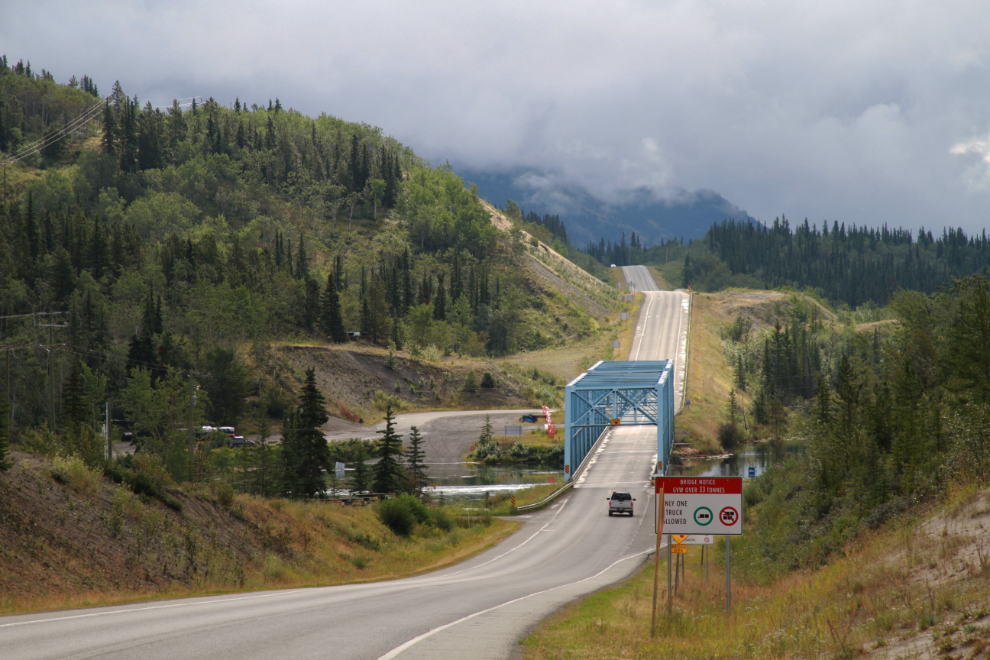
When I planned the trip the weather forecast had been great and I was going to take my motorcycle down. But the forecast kept getting worse and worse, and a last minute change of plan had me in my car. By the time I got to Km 1355 at 09:55 I was really glad I wasn’t on the bike – I can stay reasonably dry, but I really hate the reduction in visibility that rain on my helmet visor causes.
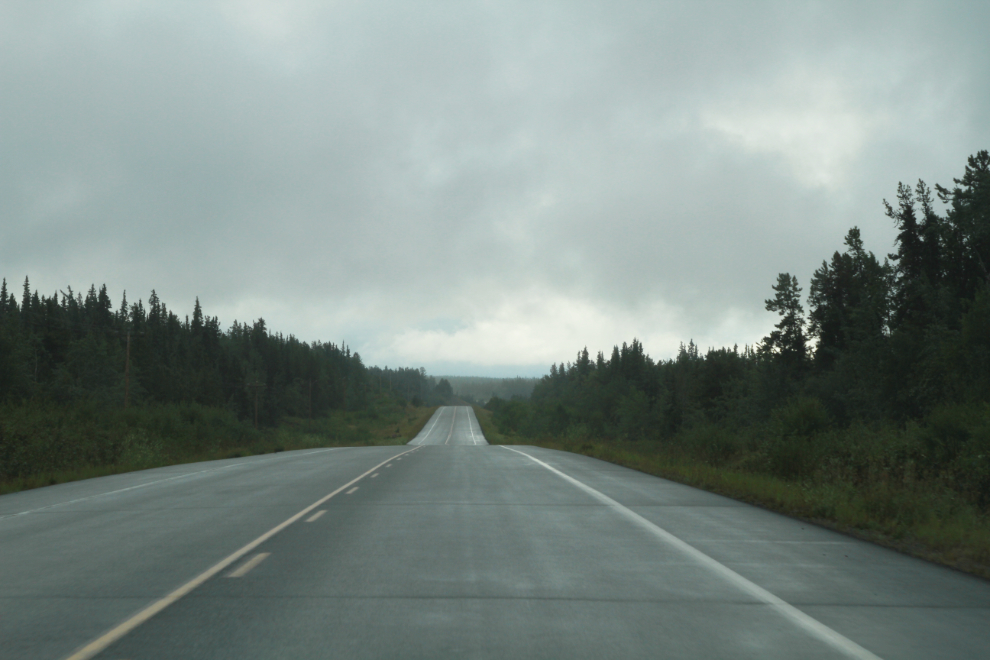
I really like this view of the highway and Teslin Lake at Km 1264.9, and have taken many photos in all seasons here over the years. This time, I shot and processed some as an HDR image to bring out the details.
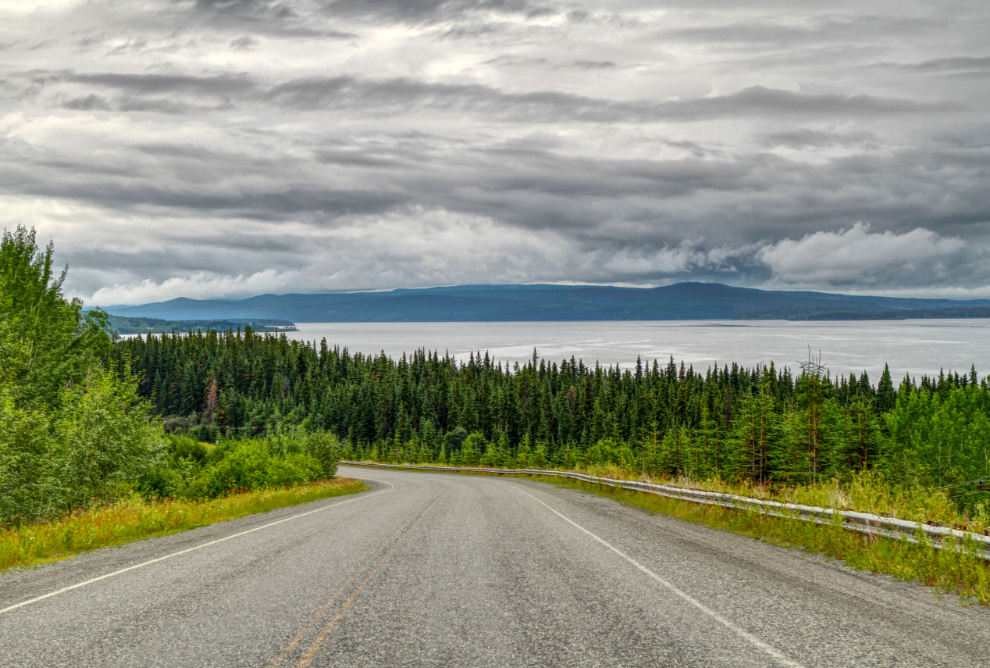
I got to Teslin just after 11:00 but continued past the museum to get some photos of the Nisutlin Bay Bridge. It’s the longest and one of the oldest bridges on the highway, and plans are well underway to replace it, probably with a boring concrete structure like all the others being built. It was great to see the water level of the lake down dramatically (15 feet?) – I was shocked at how high it had been in recent weeks.
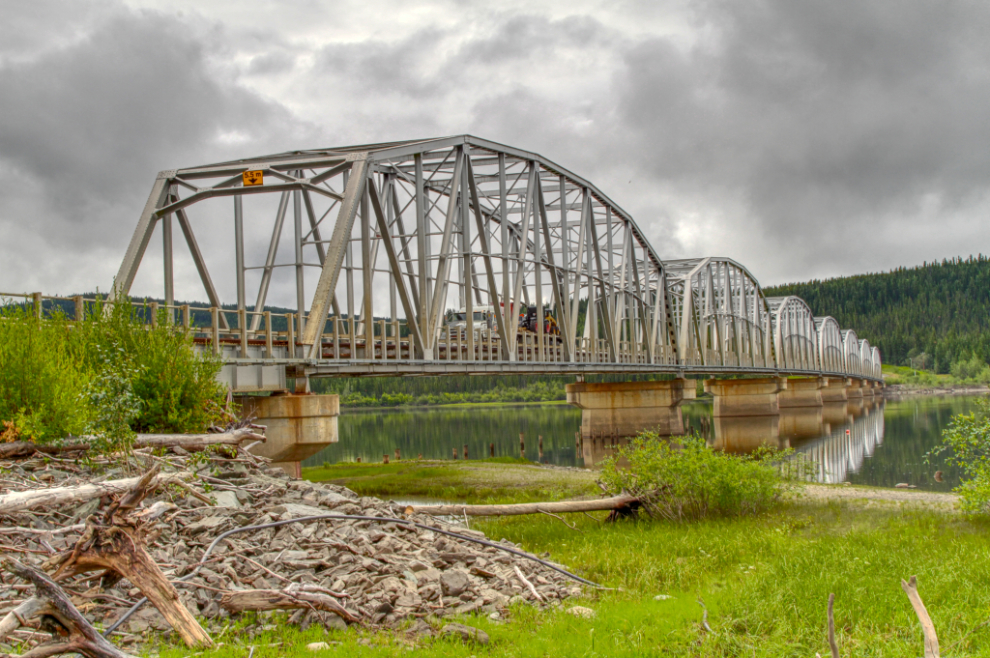
This is the George Johnston Museum as you see it from the Alaska Highway.
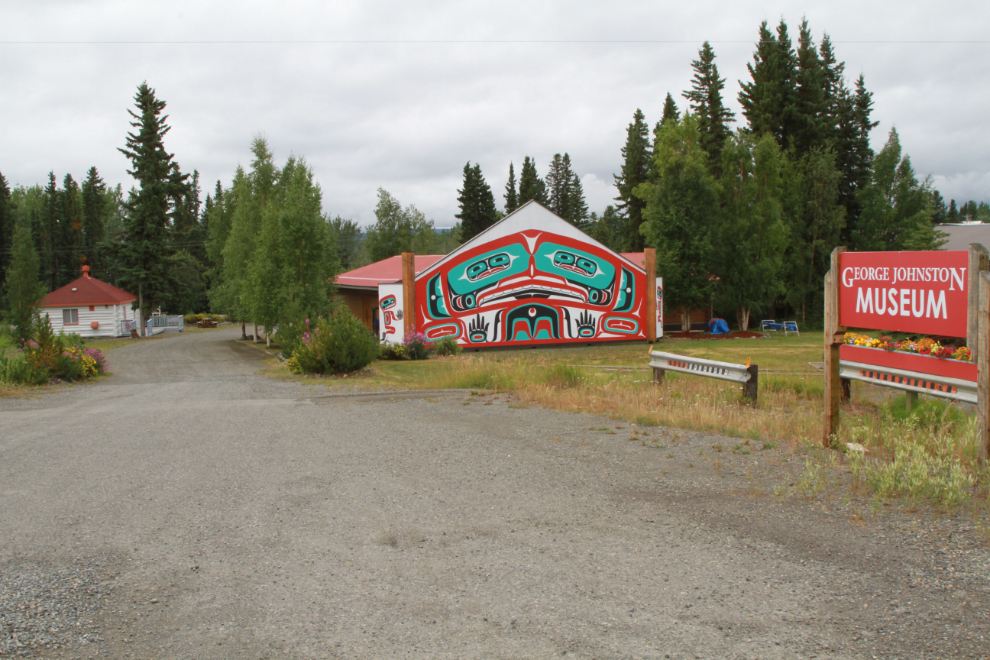
The side where you enter isn’t as exciting 🙂
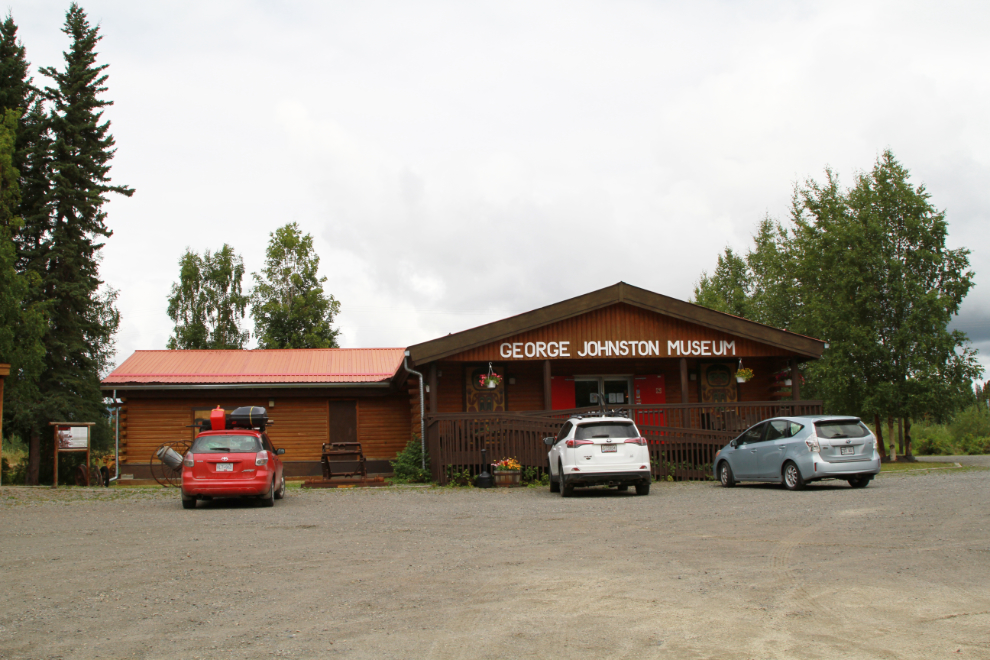
Before going inside, I spent some time with the outside exhibits, starting at a panel about the man the museum is named for. K’ashtl’áa (George Johnston) was an Inland Tlingit man who was born in the bush in about 1883-84. He is famous for a few things, but bringing the first car to Teslin in 1929, before there were any roads, is probably his best-known accomplishment. But his bush skills combined with a talent for photography make him an easy choice to have at least one page (more likely two) in my book.
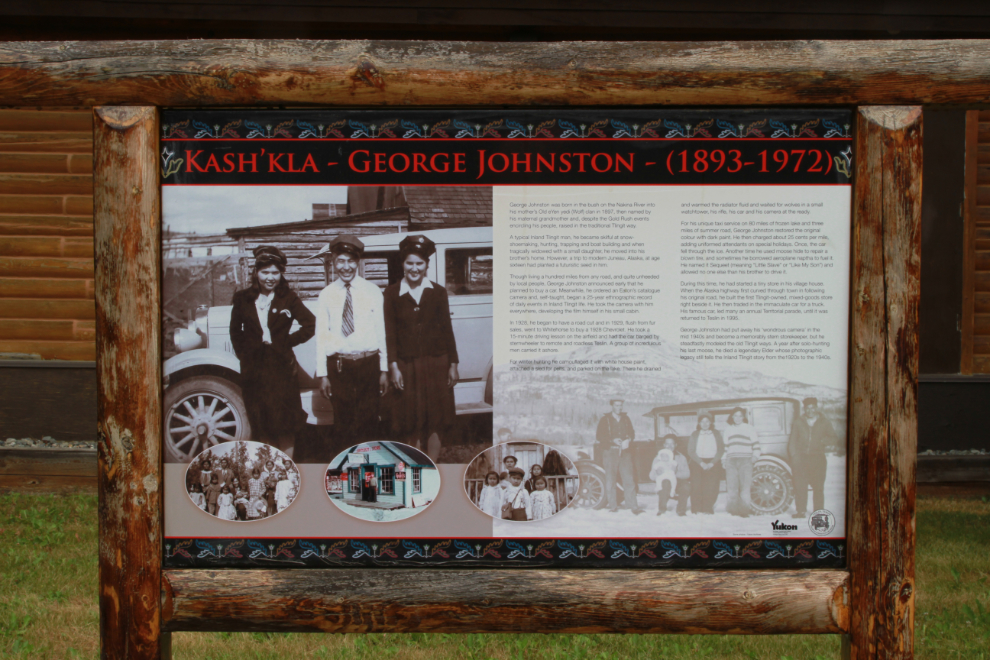
There have been several trading posts at Teslin, starting with the Hudson’s Bay Company in 1897 – it was opened to buy furs as well as to serve Klondike stampeders, but closed in 1901 when the Teslin stampede route was no longer in common use. Taylor & Drury opened a store in 1905, and they were the primary trader for decades.
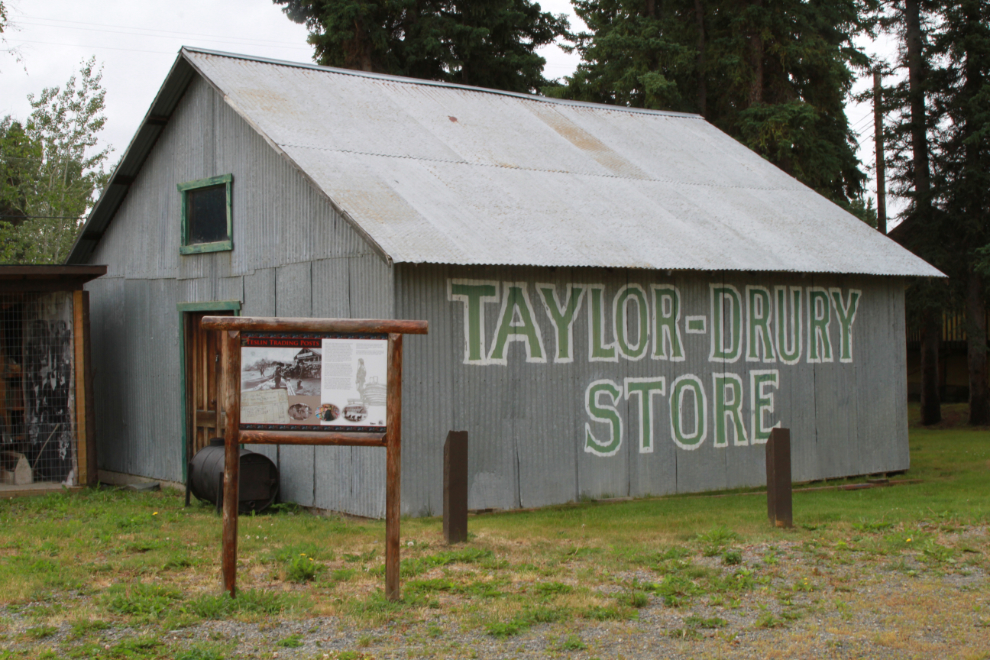
The 1940s Teslin Radio Range building (aeradio station) was one of the main things I wanted to have a good look at – it wasn’t open the last time I visited a few years ago.
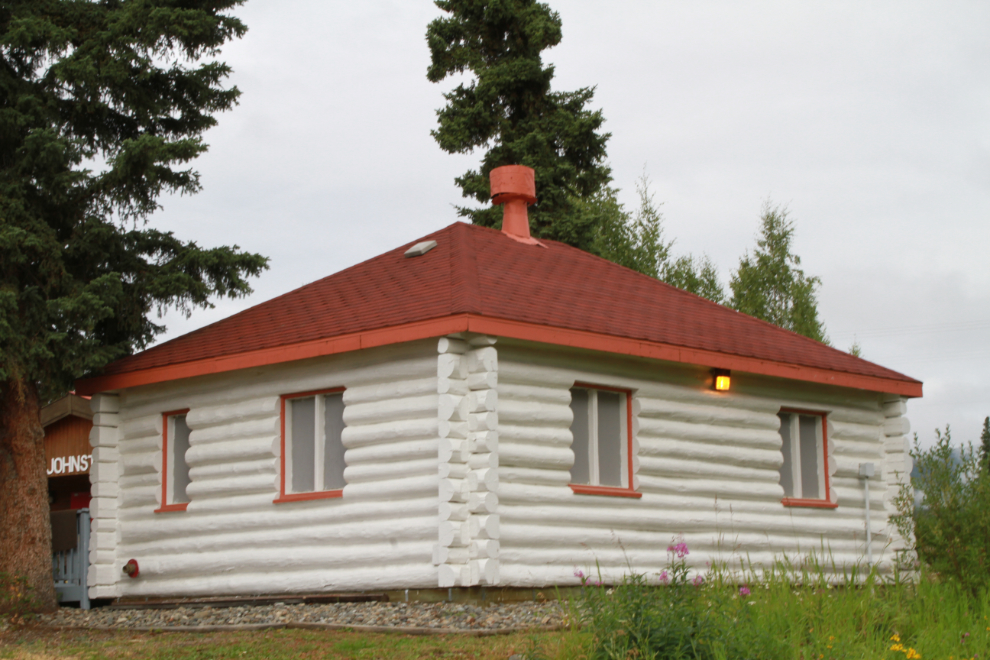
A distinctive 127-foot red-and-white antenna tower (one of 4 that were at the station) sits out behind Radio Range building. It would be great to see it erected, but it’s pretty badly bent and would take a major rebuild that I expect is unlikely to happen.
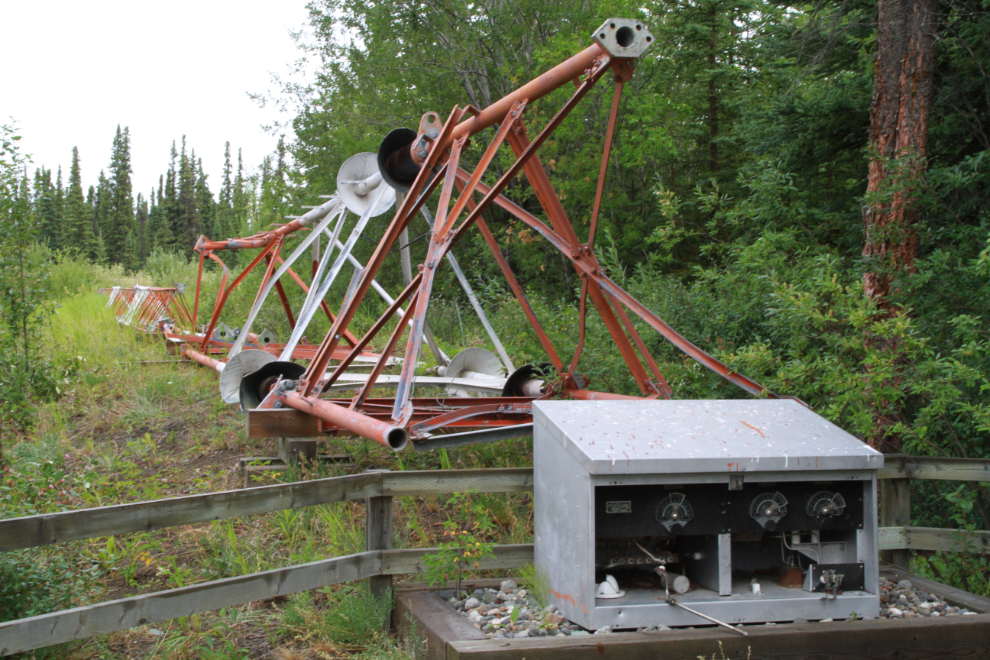
Inside the museum, George Johnston’s 1928 Chevrolet, bought new at Taylor & Drury in Whitehorse and shipped to Teslin by sternwheeler, is in the centre of the building.
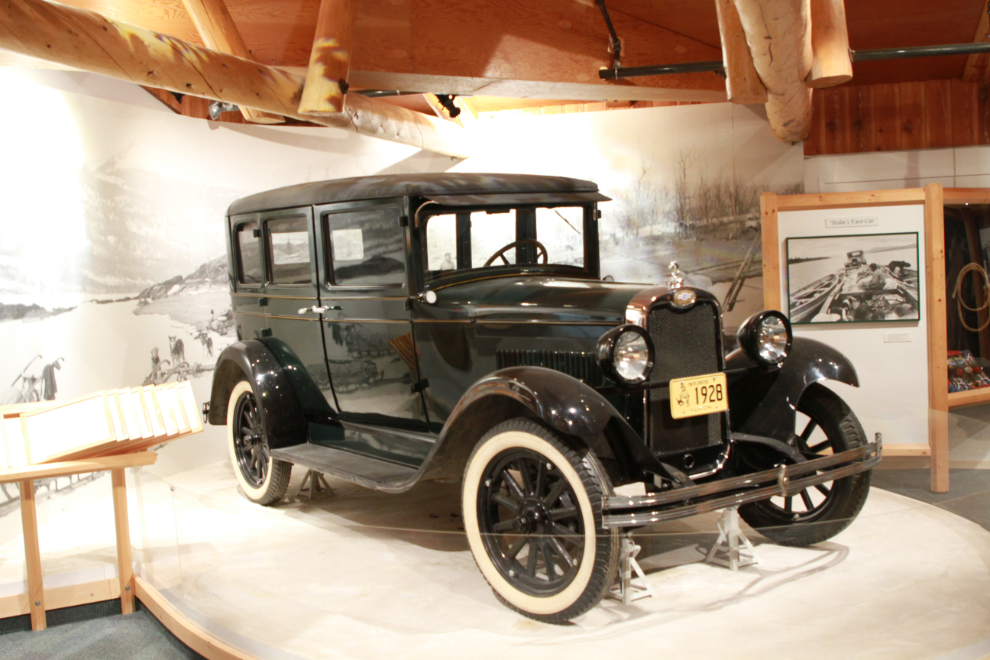
Of the many photos of the car on display, this is my favourite. I came across this photo at the Yukon Archives some 20 years ago, and it’s one of my favourite photos period – people back then were so incredibly resourceful. Whatever the problem, there was a solution.

I neglected to take a photo of the description of this gorgeous jacket so can’t tell you anything about it, but want to show it to you anyway.
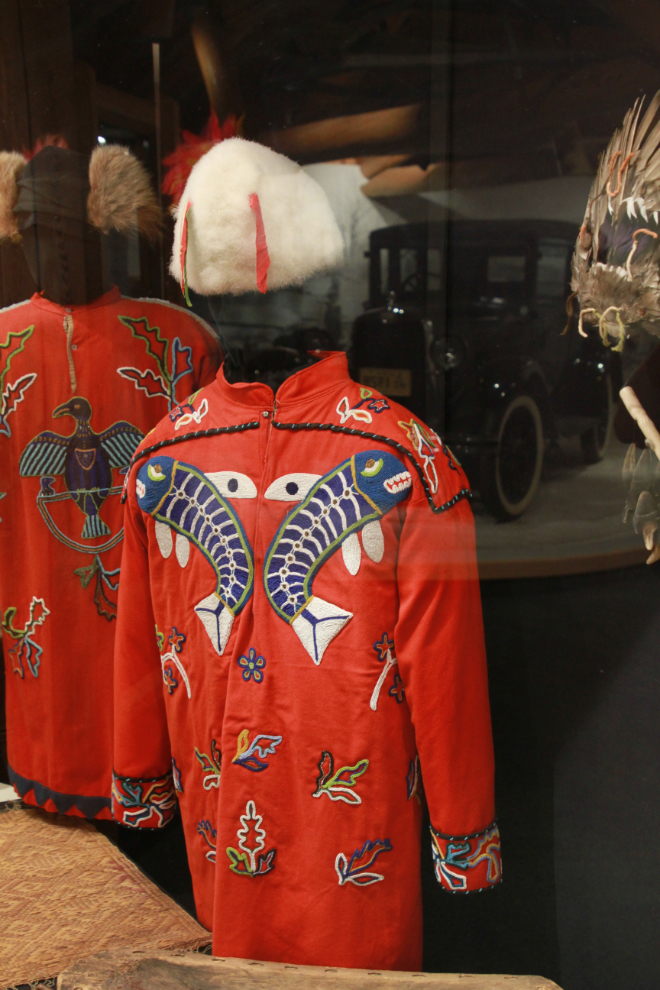
The star of a large diorama is this particularly fine grizzly.
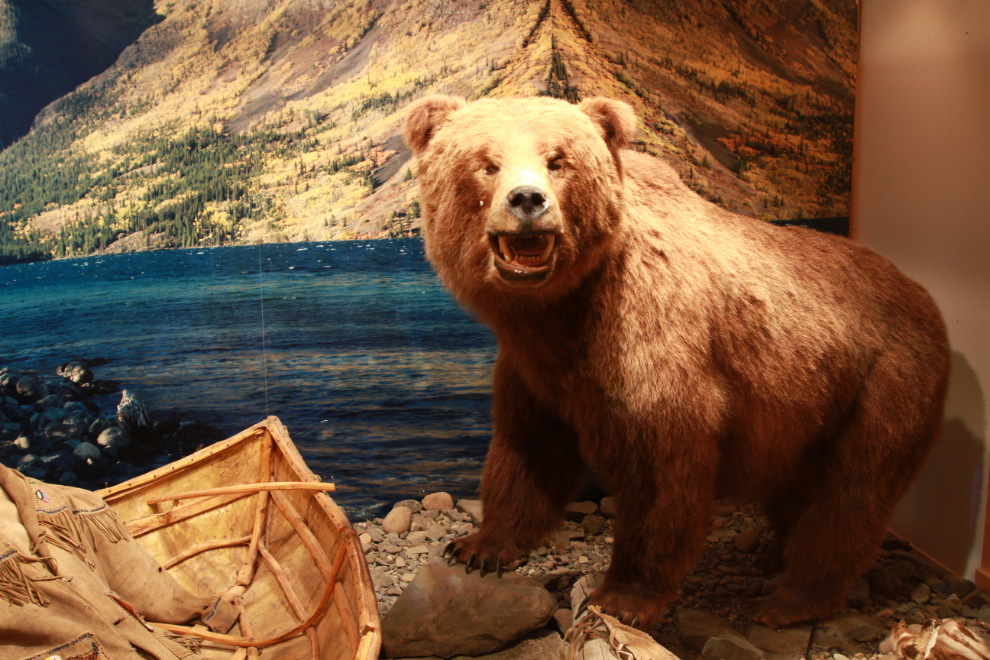
A harsh life is made easier by having the right tools, and in the old days, what you couldn’t buy, you made. This little “snowshoe” is actually a scoop for clearing ice chips from the holes chipped for ice fishing. It’s made from willow with babiche (rawhide) webbing.
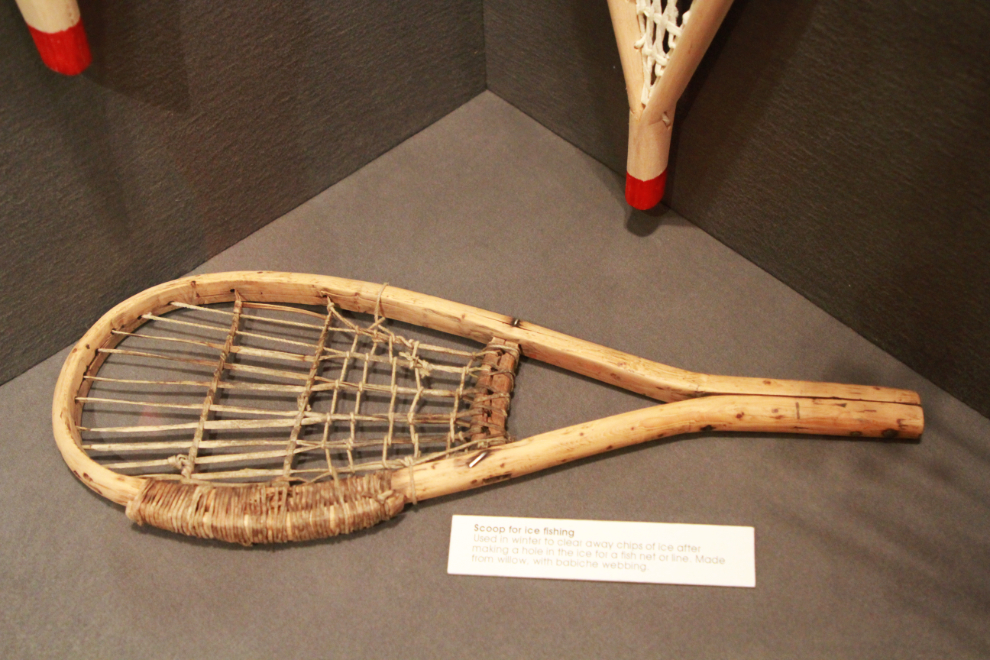
Ahhhhh – I just wanted to set myself down and pour a cup of fresh-perced coffee in the trapper’s cabin. It brought back great memories of the years I spent at my cabin on Lake Bennett.
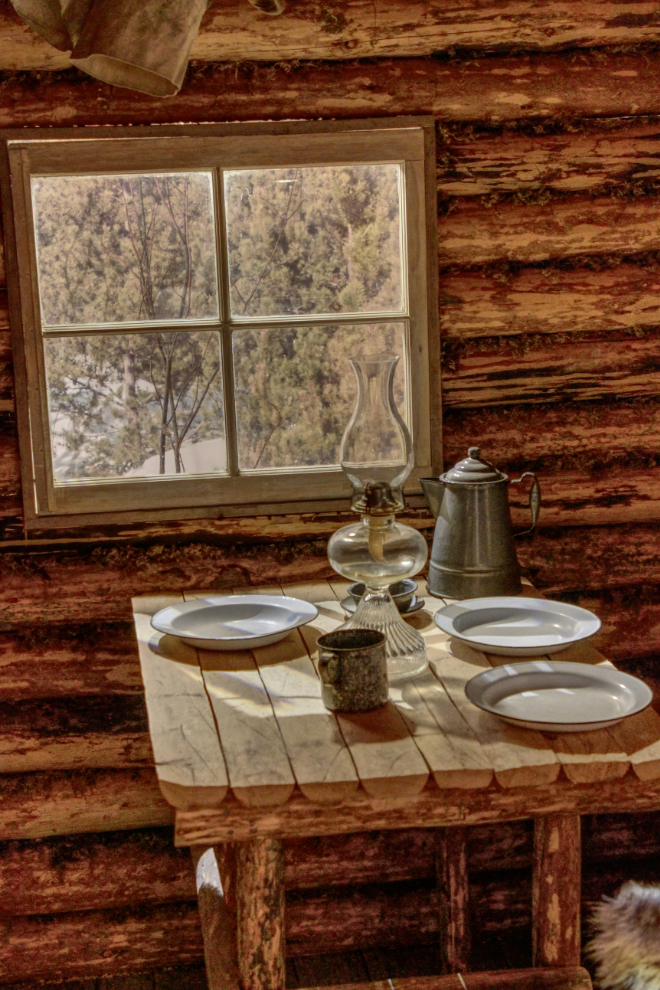
For me, this beautiful image is the sort of thing that really brings the past to life and lets me connect with the people from our past. This is captioned as Mrs. Jackson with her granddaughter in May 1951. I posted this photo in my Yukon History & Abandoned Places group when I got home and, not surprisingly, several group members are related to them. I wrote to the Canadian Museum of History yesterday and ordered a copy of it to publish in my book.
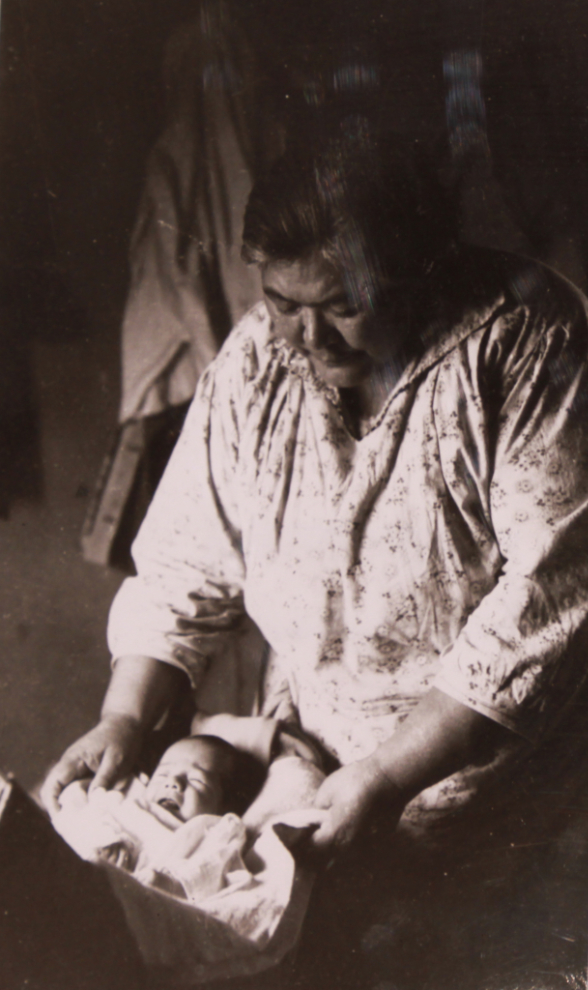
Back outside, this panel at the Radio Range building describes the basic operation of the LFR (Low Frequency Radio Range) system that the building was part of. When I got my pilot’s licence in 1967-68, knowing this system well was important, but it’s now part of history.
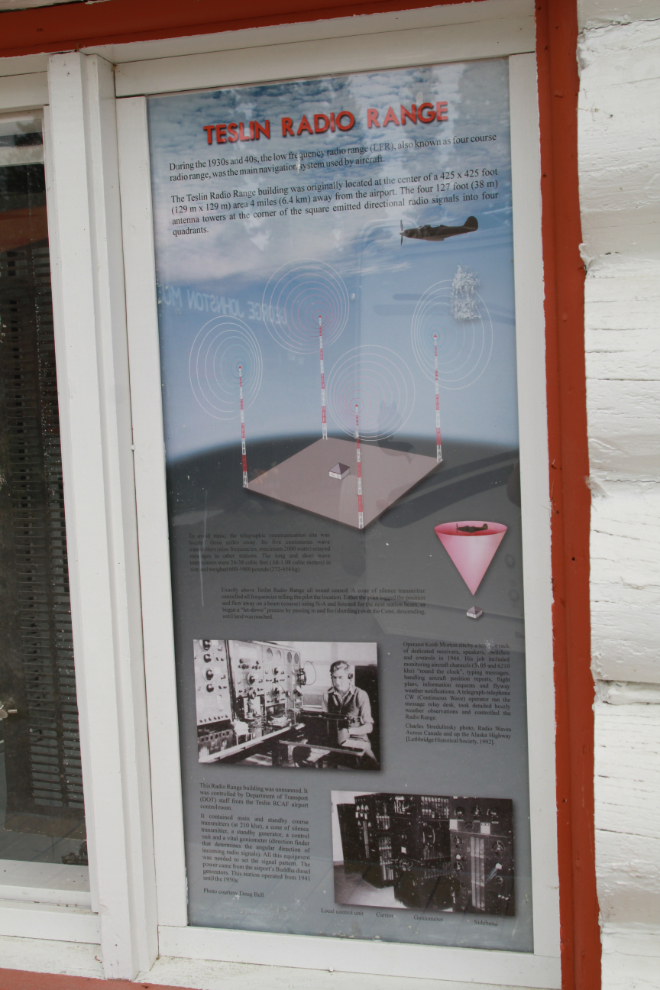
My initial reaction to the display in the Radio Range building was “wow!” An elaborate display of radio equipment (mostly photos but you have to look closely to see that they’re not real), the roar of bombers that can even be seen through a “skylight”, and some excellent interpretive panels. Very impressive and even exciting for an old pilot – it gave me the shivers. Gunter Glaeser of Glaeser Designs did the work – he can always be counted on for high quality.
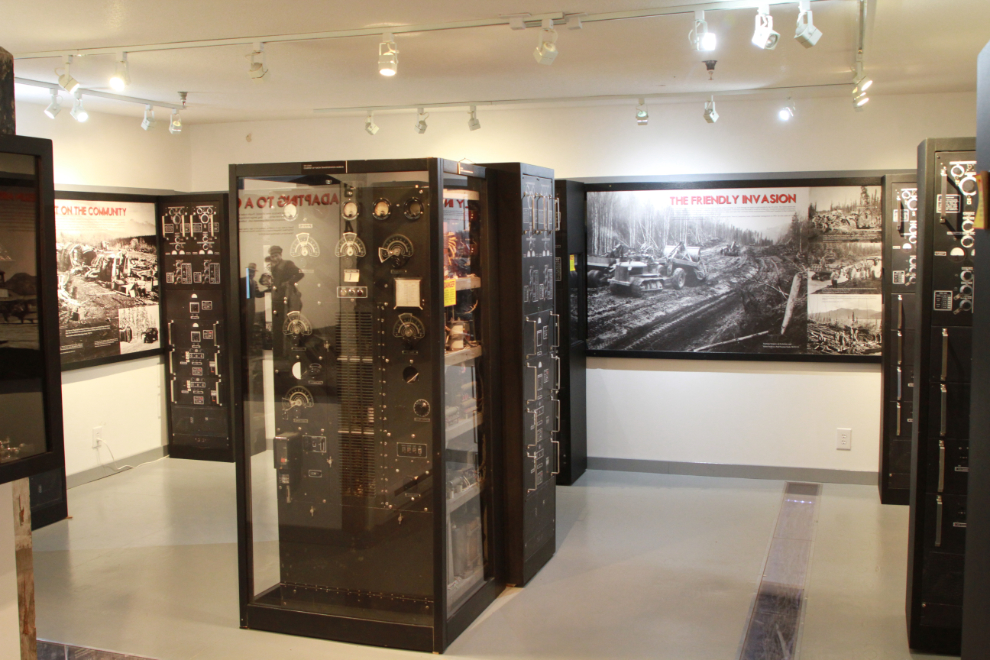
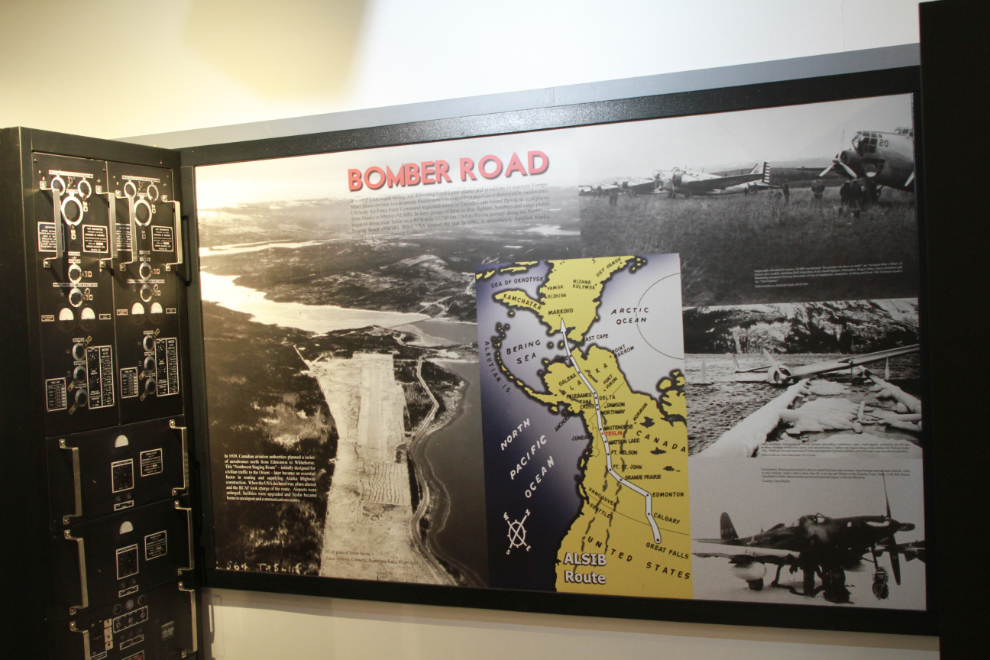
One final photo from the museum – a beautiful RCAF Teslin jacket patch, with a fire extinguisher stick beside it.
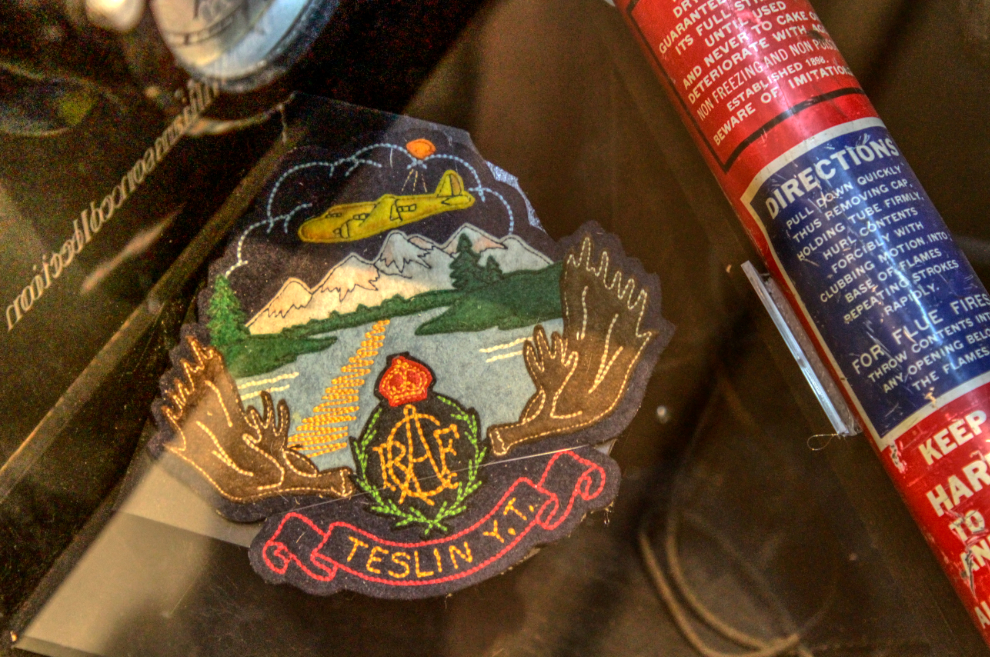
I had a very enjoyable lunch and chat on the museum deck with museum director Ryan Durack and staff member Tara Easley. I could have stayed much longer, but Murphy’s Laws were being enforced and a contractor I’d been trying to get in for weeks had said he could be at my home at 3:30, so I had to run.
The Teslin River from the bridge at Johnson’s Crossing.

Back at the blue bridge – almost home.
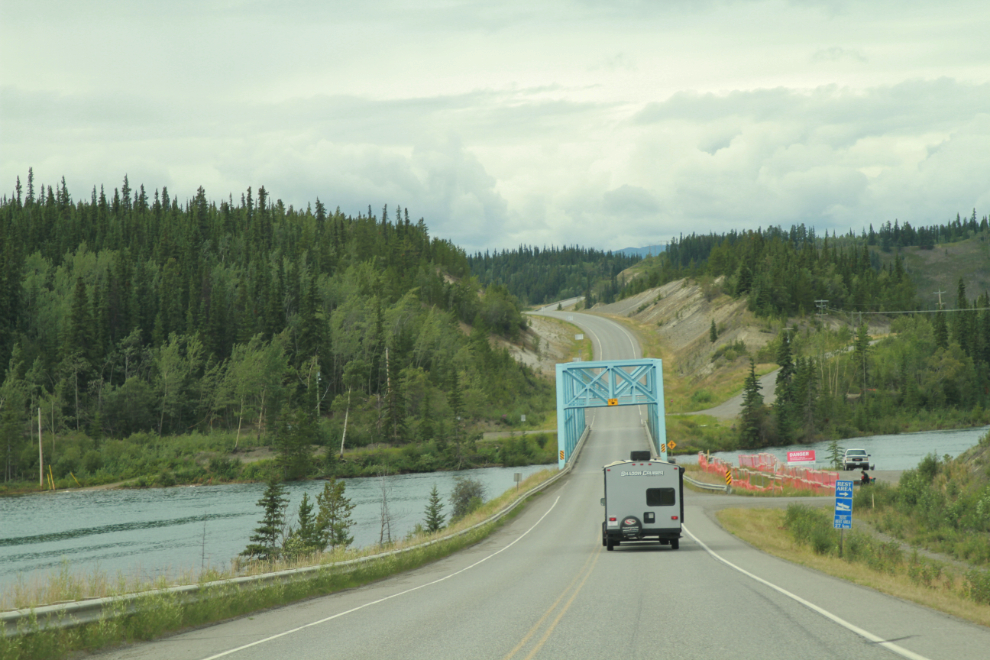
I had texted Cathy as I left Teslin, saying I’d be home for the contractor in 90 minutes. I pulled into the driveway 91 minutes later, and 10 minutes after that, the contractor showed up. Tight timing, excellent day.
